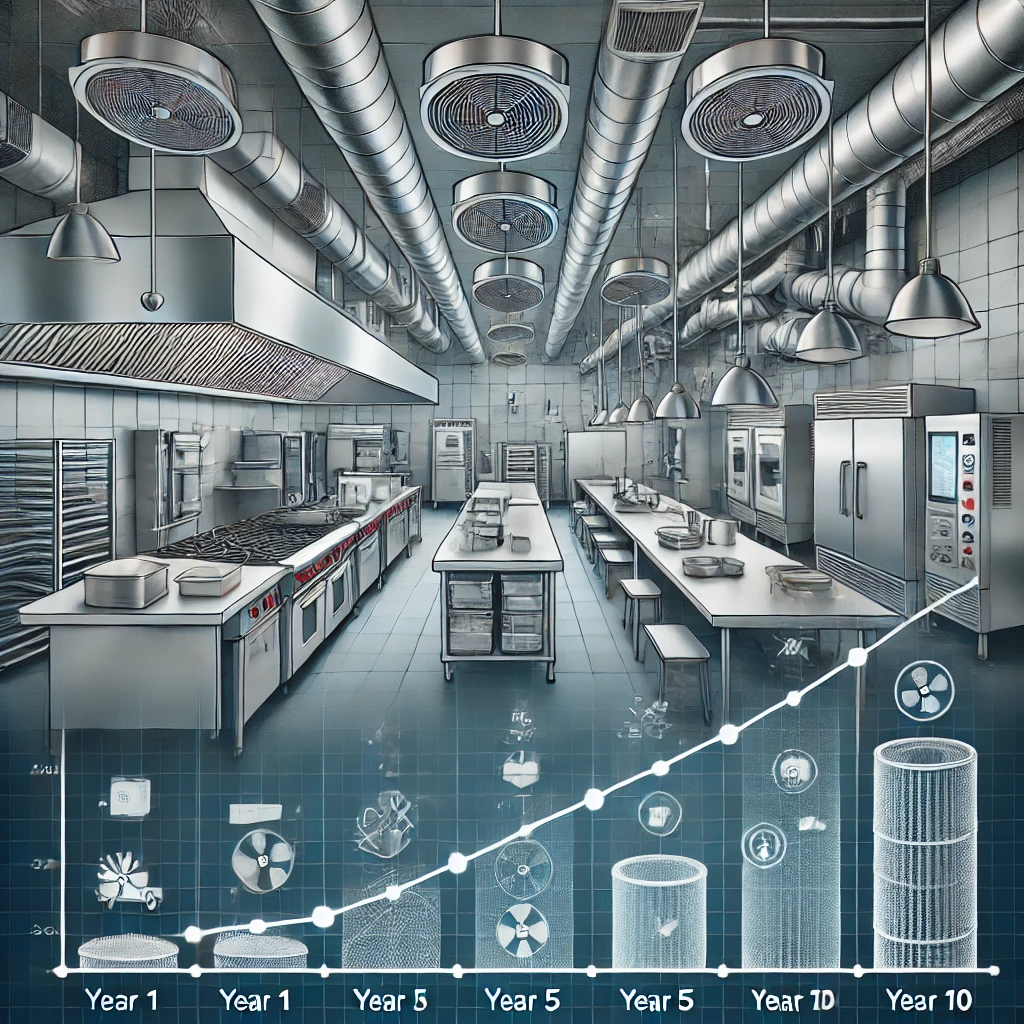When it comes to commercial buildings, ventilation isn’t a “set it and forget it” system. It’s a critical backbone for indoor air quality, employee health, regulatory compliance, and energy efficiency. But while most facility managers focus on the up-front specs—airflow rates, energy use, filtration grades—the long-term performance is where things often unravel.
Here’s what you actually need to know about how commercial ventilation systems hold up over time—and what separates the workhorses from the time bombs.
1. Degradation Is Inevitable—But Manageable
Over time, even the best-designed systems lose performance. Filters clog. Fans lose efficiency. Dampers stick. Controls drift out of calibration. If your system was pushing peak CFM on day one, don’t expect the same output five years later without intervention.
The solution: Build degradation into your maintenance plan. Preventive maintenance isn’t optional—it’s the only thing keeping your system from bleeding performance slowly over the years.
2. Energy Performance Doesn’t Age Gracefully
Aging fans, motors, and variable frequency drives (VFDs) don’t just reduce airflow—they start guzzling more energy to do the same work. That’s especially true for systems designed before energy efficiency standards got tighter.
Tip: Monitor energy use over time and compare it to benchmarks. If energy use is creeping up while output stays flat or drops, it's time for retrofits or upgrades.
3. System Controls Are Often the First to Go
Your HVAC control system might have been state-of-the-art five years ago, but software becomes obsolete fast. Sensors lose accuracy. Poorly programmed sequences fail to adapt to changing building use.
Reality check: Controls aren’t “install once and ignore forever.” Regular re-commissioning—ideally every 2–3 years—can catch drift and correct inefficiencies before they become chronic.
4. IAQ Compliance Is a Moving Target
Regulatory standards change. What passed ASHRAE standards a decade ago might not cut it today. Tenants expect more—especially after COVID-19 spotlighted the importance of ventilation.
Stay proactive: Don’t wait for a complaint or a failed inspection. Audit your system annually for compliance with current indoor air quality guidelines.
5. Retrofitting Beats Replacing (Usually)
Full system replacements are expensive and disruptive. But smart retrofits—like upgrading to EC motors, adding demand control ventilation, or switching to MERV 13+ filters—can deliver big performance gains at a fraction of the cost.
Bottom line: If your core ductwork and infrastructure are solid, build on them with smarter components rather than tearing everything out.
6. Data Is Your Best Ally
Modern systems should be connected, monitored, and transparent. If you don’t have access to real-time airflow, pressure drops, energy use, and fault diagnostics, you’re flying blind.
Recommendation: Invest in a robust building management system (BMS) or at least a standalone monitoring solution. You can’t improve what you can’t measure.
Final Thought: Longevity Is Engineered and Earned
Commercial ventilation systems can last 15–25 years—or longer—but only if they're maintained, upgraded, and monitored with long-term performance in mind. If you treat it like a short-term cost center, you’ll get short-term results. But if you treat it like a strategic asset, your system will pay you back in energy savings, healthier air, and a reputation for reliability.
Ventilation doesn’t have to be sexy. It just has to work—day in, day out, year after year.

